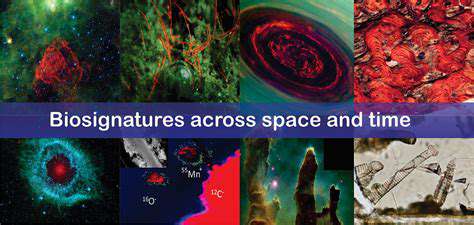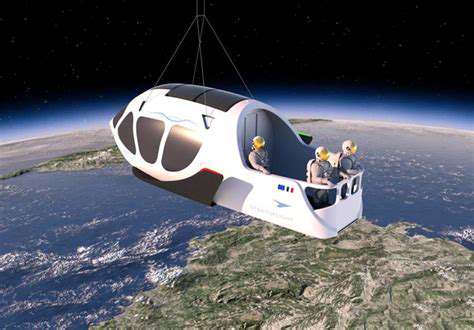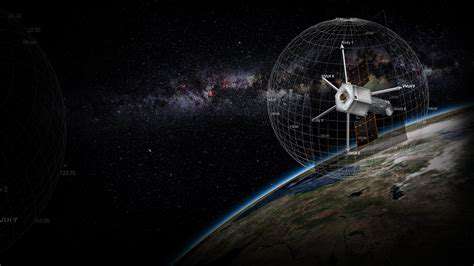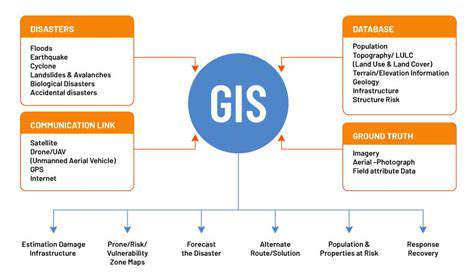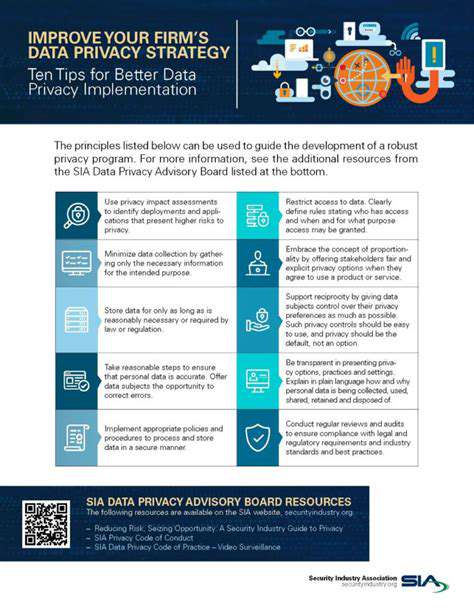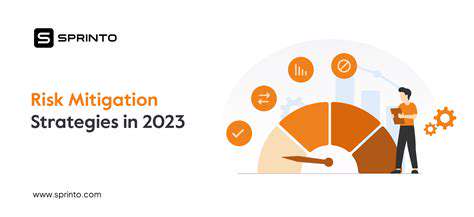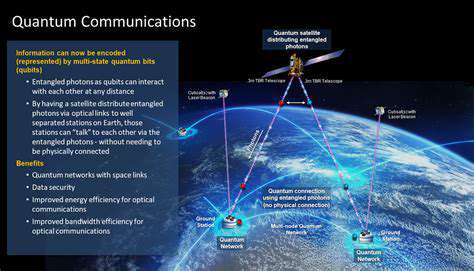The Unique Challenges of Isolation and Confinement
Psychological Impacts of Isolation
Prolonged isolation, a defining feature of spaceflight, presents significant psychological challenges. Astronauts, confined to a small, shared environment for extended periods, experience heightened stress levels, potentially leading to anxiety, depression, and even interpersonal conflicts. The lack of external stimulation and the constant awareness of vulnerability in a harsh, unforgiving environment can severely impact mental well-being. Maintaining a positive and productive mindset becomes crucial for mission success, requiring robust psychological preparation and support systems.
The isolation exacerbates pre-existing mental health conditions and can lead to new ones. The absence of social interaction, coupled with the pressure of a demanding mission, can trigger feelings of loneliness and alienation. Developing coping mechanisms and providing access to mental health resources are essential to mitigate these risks and ensure the astronauts' psychological safety and well-being throughout the mission.
Social and Communication Challenges
Maintaining effective communication and social interaction within a confined space is a critical aspect of spaceflight. Astronauts are separated from their families, friends, and support networks, impacting their social well-being. The need for clear, concise, and rapid communication becomes paramount, especially in emergency situations. The unique communication delays and limitations of space require meticulous planning and training to ensure seamless operational efficiency and minimize miscommunication.
Physical Health Concerns
Long-duration spaceflight poses numerous physical health challenges, particularly concerning muscle atrophy, bone density loss, and cardiovascular issues. The lack of gravity in space affects the human body in significant ways, leading to a decrease in bone mass and muscle strength. Maintaining physical fitness and implementing countermeasures to mitigate these effects are essential to ensure the astronauts' health and ability to perform their duties effectively.
The confined environment also presents challenges for maintaining hygiene and sanitation. Proper waste management, hygiene protocols, and the prevention of infectious diseases are crucial aspects of the mission's success. Astronauts must adhere to stringent protocols to maintain a healthy and safe environment, preventing the spread of illness, and ensuring their overall physical well-being.
Cognitive Impacts and Performance Degradation
The demands of spaceflight extend beyond the physical and psychological realms, impacting cognitive function and overall performance. The constant pressure of a demanding mission, coupled with the unfamiliar environment and isolation, can impair decision-making abilities and reaction times. Maintaining optimal cognitive function is crucial for mission success, requiring strategies to counteract the mental fatigue and stress associated with spaceflight.
Maintaining focus and concentration in a stressful environment is essential for astronauts. Strategies for mitigating cognitive fatigue, such as adequate rest, relaxation techniques, and mental exercises, are essential components of astronaut training and mission preparation. The impact on cognitive performance must be considered for efficient and safe mission execution.
Adaptive Strategies and Countermeasures
Space agencies and researchers have developed various strategies to address the unique challenges of isolation and confinement in space. These include advanced training programs focused on stress management, communication protocols, and maintaining physical fitness. The use of virtual reality simulations and advanced communication technologies can help to mitigate the psychological and social impacts.
Developing novel countermeasures to address the physical and cognitive impacts of spaceflight is an ongoing area of research. This includes optimizing exercise regimes, dietary plans, and the use of advanced technologies to maintain bone density and muscle mass. Continuous monitoring and adaptation are crucial to ensuring the safety and success of future space missions.
The Role of Communication and Social Interaction
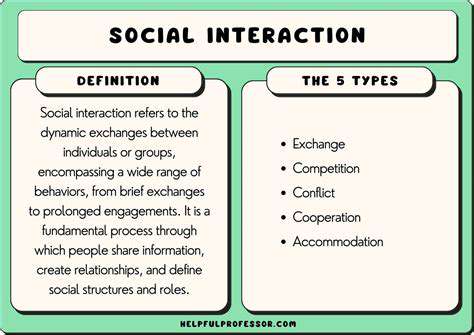
The Importance of Clear Communication
Effective communication is fundamental to any successful interpersonal relationship, whether it's a personal bond or a professional partnership. Clear and concise communication fosters understanding and minimizes misunderstandings, leading to more positive outcomes. This clarity is crucial in avoiding conflicts and promoting a collaborative environment. When people can express themselves openly and honestly, while actively listening to others, it creates a space for empathy and mutual respect. This principle applies across various contexts, from resolving disagreements at work to strengthening family ties. Open communication is essential for building trust and rapport.
Furthermore, clear communication facilitates the exchange of ideas and information. When individuals can express their thoughts and perspectives with precision, they can contribute meaningfully to discussions and problem-solving processes. This exchange of information allows for the development of creative solutions and innovative approaches to challenges. A shared understanding, achieved through clear communication, is the cornerstone of effective collaboration and collective progress.
The Impact of Societal Structures on Communication
Societal structures, including cultural norms, socioeconomic status, and power dynamics, profoundly influence communication styles and interactions. Different cultures often have varying communication protocols, such as direct versus indirect communication styles, which can lead to misinterpretations if not carefully considered. Understanding these nuances is essential for effective cross-cultural communication.
Socioeconomic status can also play a role in communication, as individuals from different backgrounds may have varying levels of comfort and experience with certain communication channels or styles. These factors can affect how individuals perceive and respond to messages. Understanding these nuances is critical for fostering inclusivity and ensuring that all voices are heard in any given situation.
Power dynamics within a group or organization can also shape communication patterns. Individuals in positions of authority may communicate differently than those with less power, which can lead to communication barriers. Recognizing and addressing these power imbalances is crucial for fostering a more equitable and inclusive communication environment.
The Role of Technology in Modern Communication
Technology has revolutionized the way we communicate, connecting people across vast distances and facilitating instant information exchange. Platforms like social media, email, and instant messaging have become integral parts of daily interactions, both personal and professional. This constant connectivity has blurred the lines between physical and virtual spaces, significantly impacting how we communicate.
The rapid pace and accessibility of modern communication technologies can also present challenges. Misinterpretations are more likely due to the lack of non-verbal cues in digital interactions. It's essential to be mindful of the potential for miscommunication and to strive for clarity and precision in digital communication.
Communication and Social Change
Communication plays a vital role in driving social change. The ability to share ideas, mobilize support, and organize collective action is essential for challenging societal norms and advocating for positive change. From civil rights movements to environmental activism, communication has been a powerful tool for social transformation.
Effective communication strategies are critical in raising awareness about important issues and inspiring action. By using various platforms and methods to disseminate information, individuals and groups can shape public opinion, influence policy decisions, and ultimately contribute to a more just and equitable society.
The Impact of Space Environment on Mental Health
The Psychological Toll of Isolation
Spaceflight, by its very nature, necessitates prolonged periods of isolation and confinement. Astronauts are separated from the familiar comforts and support systems of Earth, leading to a heightened vulnerability to psychological stress. This isolation can manifest in various ways, from feelings of loneliness and boredom to more severe issues like anxiety and depression. The limited social interaction and lack of privacy can exacerbate pre-existing mental health conditions, and create new challenges for individuals adapting to the unique pressures of space travel. Understanding these psychological implications is crucial for developing effective countermeasures and ensuring the well-being of astronauts during missions.
The lack of social interaction and the feeling of being disconnected from the world can significantly impact astronauts' mental health. They may experience feelings of isolation and loneliness, which can be particularly pronounced during extended missions. Furthermore, the limited access to familiar coping mechanisms and support networks can further exacerbate these feelings. It's essential for space agencies to develop strategies to address these issues and create a supportive environment for astronauts during their time in space.
The Effects of Microgravity on Cognitive Function
The unique environment of microgravity presents a range of challenges to astronauts' cognitive functions. Astronauts often report experiencing difficulties with spatial orientation, memory, and decision-making in the weightless environment. The absence of gravity can disrupt the body's natural equilibrium, leading to disorientation and affecting the brain's ability to process information effectively. These cognitive changes can have significant implications for mission success, as astronauts must maintain focus, accuracy, and critical thinking throughout their missions.
Studies have shown that prolonged exposure to microgravity can impact various aspects of cognitive function. This includes difficulties with spatial reasoning, problem-solving, and even basic memory tasks. The precise mechanisms behind these effects are still being investigated, but the implications for mission safety and crew performance are undeniable. Developing strategies to mitigate these cognitive changes and enhance astronaut performance in microgravity is crucial for successful long-duration spaceflights.
The Impact of Time Dilation and Temporal Disruptions
The concept of time dilation, while a fascinating aspect of relativity, presents unique challenges to astronauts' sense of time and perspective. The experience of time in space, especially for long-duration missions, can differ from the experience on Earth. This discrepancy can lead to feelings of disorientation, a sense of detachment from Earthly time, and potentially affect their overall mental well-being. Understanding how time perception is affected in space is crucial for managing astronaut stress and ensuring psychological stability.
The Pressure of Responsibility and Performance
Astronauts operate under immense pressure to perform flawlessly during missions. The stakes are high, and any error or malfunction could have serious consequences. This pressure, coupled with the isolation and confinement, can contribute to significant stress and anxiety. The responsibility for the success of the mission and the safety of the crew rests heavily on the shoulders of the astronauts. Addressing the psychological pressures associated with this heavy responsibility is paramount.
The intense focus on performance and the importance of every decision made can create a significant amount of pressure on the astronauts. They face the responsibility of not only completing their tasks but also ensuring the safety of the entire mission. This high-stakes environment can lead to heightened stress and anxiety, making it crucial for space agencies to develop strategies to manage these pressures and support astronaut well-being.
Environmental Factors and Sensory Adaptation
Spaceflight exposes astronauts to a range of environmental factors that can affect their mental health, including the unique lighting conditions, sounds, and smells of the spacecraft. The sensory environment in space is significantly different from that on Earth, and astronauts must adapt to these novel conditions. The constant exposure to artificial lighting and the absence of natural sounds and smells can lead to sensory overload or monotony, impacting their mental state. It's crucial to consider how these factors influence astronaut perception and well-being.
The Importance of Social Connection and Support Systems
Maintaining social connections and establishing robust support systems are crucial for astronaut well-being during space missions. The isolation of spaceflight can be mitigated by fostering strong relationships with crewmates, ground control personnel, and family members. Regular communication, virtual interactions, and access to psychological support are essential elements in creating a conducive environment for mental health. Establishing strong communication channels and providing readily available support networks can significantly reduce the psychological strain of spaceflight.



